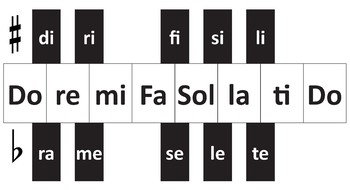


No examples for descending scales, I hear you ask? We will deal with that later as there is a ‘rule’ about that. Starting with E for the ascending scale, we would have:Į – F – F# – G – G# – A – A# – B – C – C# – D – D#. The scale rises by one semitone or half step each time. Giving you twelve notes.īut you can play a Chromatic scale starting from anywhere. If we are to play an ascending Chromatic scale in C, then the notes would be:Ĭ – C# – D – D# – E – F – F# – G – G# – A – A# – B. One semitone, or half step at a time.įor a more in-depth explanation, I recommend The Complete Book of Scales, Chords, Arpeggios & Cadences: Includes All the Major, Minor (Natural, Harmonic, Melodic) & Chromatic Scales. But whichever way you choose, the same rules will apply. I say below because a Chromatic scale can be played in ascending order or descending. Each note is, therefore, a semitone or a half step above, or below, the last note. Unlike the notes in a major or a minor scale, the notes are the same distance apart. If you were to carry on, the next would be the 13th note which would be the start of the next Chromatic scale. If you look down at the keyboard of a piano, organ, or similar, the Chromatic scale is all of the white and black keys in one octave.įor example, if you start with C and play every note, white and black, you will play 12 notes, and that is your Chromatic scale. But there is only one scale that uses all the notes, or pitches, available, and that is the Chromatic. There are, of course, differences between major and minor scales. Octatonic or Diminished scales – 8 notes.
Chromatic solfege plus#


Chromatic solfege how to#
Want to learn how to play by ear? Check out this video to learn more. ✅ Learn music faster and retain it better Solfege is a powerful tool that is often used for singers, but is amazing for musicians of any level. By using solfege, we’re actually describing that function.īy singing the chromatic solfege scale ascending, we are cementing those intervals in our ear so we can hear and sing them with confidence. The reason that we use solfege and not just note names is because we want to describe how the notes function and depending on what degree of the scale we’re on, that note has a function and a sound. If you’re in the key of C, then C is ‘do’. If you’re in the key of A, then A is ‘do’. In movable ‘do’ solfege, whatever key we are in, that note is ‘do’. This is a very important step! Solfege is a technique of naming the notes in a way that describes their function. It will help you get to know the feeling of the half step intervals so you can sing them in tune. Practicing the chromatic scale in solfege, is a great way to ensure that you are able to sing your pitches clearly and accurately. In this video I will share solfege practice in major. I sing it in several different keys, droning the Do (the tonic or root note) as I play. In this video, I sing you up and down the major scale in Moveable Do solfege using the Kodaly hand signs. This is not only a pathway to better ear training, but also leads to playing songs by ear, remembering melodies and chords and will improve your songwriting and improvising. Solfege helps you to build strong ears so you can hear and imagine pitch better. Last week, I broke down how to sing the chromatic solfege scale ascending (going up). I will take you through an effective method to break down this challenging scale so you can sing it perfectly in tune every time. In this video, we will sing the CHROMATIC SOLFEGE SCALE DESCENDING.


 0 kommentar(er)
0 kommentar(er)
